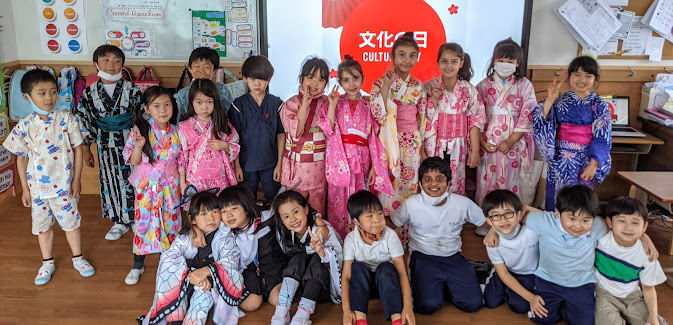Unit 2: How The World Works
This unit has been very exciting and rewarding. We enjoyed participating in Japanese culture day, the Talent Show, as well as shopping at the grade 6 & 7 stalls to raise money for charity. We learned about the scientific method and conducted multiple experiments, culminating in making a Rube Goldberg Machine. We created a class book, and designed and made two maths games. We also worked on our personal and social skills, working together to understand how it feels to be left out, and how we can show that we respect each other both in and outside of the classroom.
Theme: How The World Works (Students explored an aspect of the underlined section)
An inquiry into the natural world and its laws; the interaction between the natural world (physical and biological) and human societies; how humans use their understanding of scientific principals; the impact of scientific and technological advances on society and on the environment.
Central Idea: People use their understanding of natural laws to manipulate objects.
Lines of inquiry:
Form- the different physical forces and laws
Function - how forces work on people and objects
Change - how simple machines change the direction or magnitude of a force
Learner Profile: Thinker, knowledgeable, inquirer
Skills: Thinking, Research
Subject Focus: Science
Our Unit of Inquiry involved a lot of hands on discovery. The students particularly enjoyed the excitement of the experiments, and everyone was eager to test their hypotheses. We looked at different forces, and did experiments to better understand; friction, air resistance, and magnetic force. We also examined simple machines and how they are used to manipulate objects in everyday life. For our summative assessment students planned, built, and tested their own Rube Goldberg machine. Everyone enjoyed working on this, and we enjoyed building our problem solving skills along the way.
Mathematics
In Mathematics we continued working on our subtractions skills, using algorithms for borrowing using up to 3 digit numbers. We then moved onto time, continuing to practice reading analogue and digital clocks to the nearest five minutes, then using quarter past, quarter to, and half past. This was particularly challenging, but I was impressed with everyones perseverance in mastering this. Finally we worked on fractions. We practiced this using pizza fractions, which was easy for everyone, and helped to make sense of fractions in a real world sense. Everyone was confident with reading fractions from a picture, but found equivalent fractions a little tricky, but got it by the end.
For our summative assessment task students worked in two groups to develop a maths game (to help students practice the concepts we have learned so far). Students were very engaged and motivated, and were eager to work together to plan, create, and problem solve their final games.English
In English we continued to build on our understanding of grammatical structures, including rules for adding -ing, -ed, and -s to verbs, segmenting into individual sounds for spelling, and identifying know suffixes and prefixes. We also improved our writing skills, writing for different purposes, including narrative and descriptive writing.
We used mind maps and storyboards to plan for our creative writing assignment, and we filled out book reports each week for our library books, checking for spelling and punctuation. We worked on our speaking skills, giving presentations on our book reports each week, and practiced summarising which was tricky for everyone. For our summative assessment task we wrote a good copy of our creative writing assignment for the class book, and included illustrations that enhanced our writing.














Comments
Post a Comment